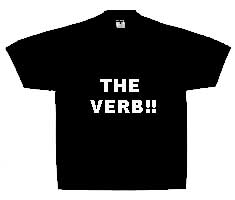|
VERB TYPES
Look at these four sentences:
1. The boy is playing.
The verb
element
in this sentence contains more than one word - it must be a phrase.
It is, therefore, called a verb phrase (some people call this a
verb chain): is playing.
2. The boy is playing a guitar.
Here, the verb
phrase/chain is playing
requires an object.
-
Verbs that need an object to be complete in their meaning are called
transitive verbs.
In a transitive verb, action is always being transferred from a subject to
an object.
-
The object -
the thing that directly takes the action of the verb - will be a noun or
noun phrase; it is sometimes referred to as the verb's direct object.
-
As in the
first example above, this verb is able to create sentences without an object. This shows
that some verbs can be both transitive or intransitive according to how
they function in their sentence.
3. The boy gave his friend the guitar.
Here the verb
has two objects: friend and guitar.
-
One object, called the
direct object, takes the
direct action of the verb (the guitar).
-
The second
object, called the indirect object, is
not directly affected by the verb but is the receiver of something from the action (his friend).
Compare: She gave me a present
for my birthday.
4. The boy is a good guitar player.
Here, the verb
'is' acts only to link its
subject, The boy
to a following phrase. This phrase is not an object as it does no more than
add more detail to the subject, a good guitar player.
-
Words that
follow a verb to add detail to the subject
in this way cannot be an object as they do not receive any action
from the verb.
-
These phrases
are called a verb's
complement.
-
Verbs such as
is (there
are a very few others, e.g. be, am, are, appear, seem) are called linking verbs:
the ink their subject with a complement.
|
![]()
